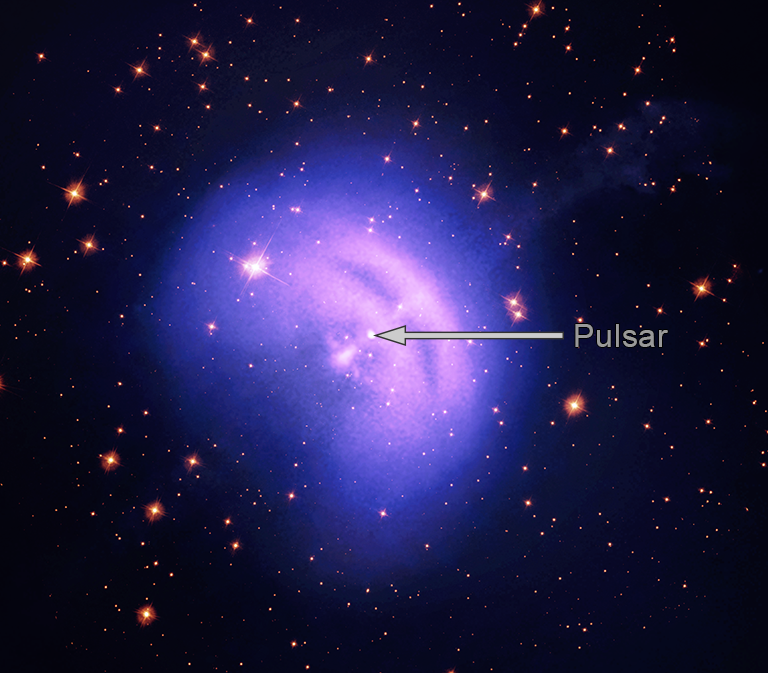NASA's Imaging X-ray Polarimetry Explorer (IXPE) has produced the first-ever X-ray polarization data of the Vela pulsar wind nebula, which lies about 1,000 light-years from Earth in the constellation Vela.
A pulsar is the remnant of a massive star that exploded around 10,000 years ago, and the Vela pulsar wind nebula consists of winds of particles from the pulsar that travel near the speed of light, creating a chaotic mix of charged particles and magnetic fields that crash into surrounding gas.
X-ray polarization data can help researchers understand how a cosmic object such as a pulsar accelerates particles to high speeds.

Hues of Vela Pulsar
The hazy light blue halo surrounding the Vela pulsar corresponds to the X-ray polarization data from IXPE. A blue fuzzy line pointing towards the upper right-hand corner of the image represents a jet of high-energy particles emanating from the pulsar at roughly half the speed of light.
Pink X-ray "arcs" around the pulsar are believed to mark the borders of donut-shaped regions where the pulsar wind shocks and accelerates high-energy particles.
The white circle in the center of the image represents the pulsar itself, and the golden stars were captured by NASA's Hubble Space Telescope.
Additionally, pink and purple colors in the image represent data from NASA's Chandra X-ray Observatory, which has studied Vela several times in the past.
"With IXPE, we are using extreme objects like Vela as a laboratory to investigate some of the most pressing questions in astrophysics, such as how particles get catapulted to near the speed of light long after a star has exploded," Phil Kaaret, senior scientist at NASA's Marshall Space Flight Center, said in a press release statement.
High Degree of Polarization
A recent study conducted by scientists revealed that the X-rays detected from the Vela pulsar wind nebula exhibit a high degree of polarization. This implies that the electromagnetic fields within the nebula are well-organized and aligned in specific directions, depending on their position in the nebula.
Additionally, the X-rays detected are produced by high-energy electrons that spiral in the magnetic fields of the pulsar wind nebula, a process known as synchrotron emission. This high degree of polarization suggests that these magnetic fields must also be well-organized.
The high polarization in the Vela pulsar wind nebula suggests that electrons were not accelerated by turbulent shocks. Instead, magnetic reconnection might be involved, converting magnetic energy to particle energy.
Data from IXPE indicates that the magnetic field is aligned in a smooth donut-shaped structure, consistent with scientists' expectations.
This finding fills a missing piece of the Vela pulsar wind nebula puzzle and is consistent with radio images of the outer nebula. The Vela pulsar has a diameter of 15 miles (25 kilometers) and rotates 11 times per second, located 1,000 light-years from Earth.
Related Article: NASA Hubble Space Telescope Catches a Glimpse of a Star Before it Turns into Supernova: It's Different from the Rest of the Stars

ⓒ 2025 TECHTIMES.com All rights reserved. Do not reproduce without permission.




